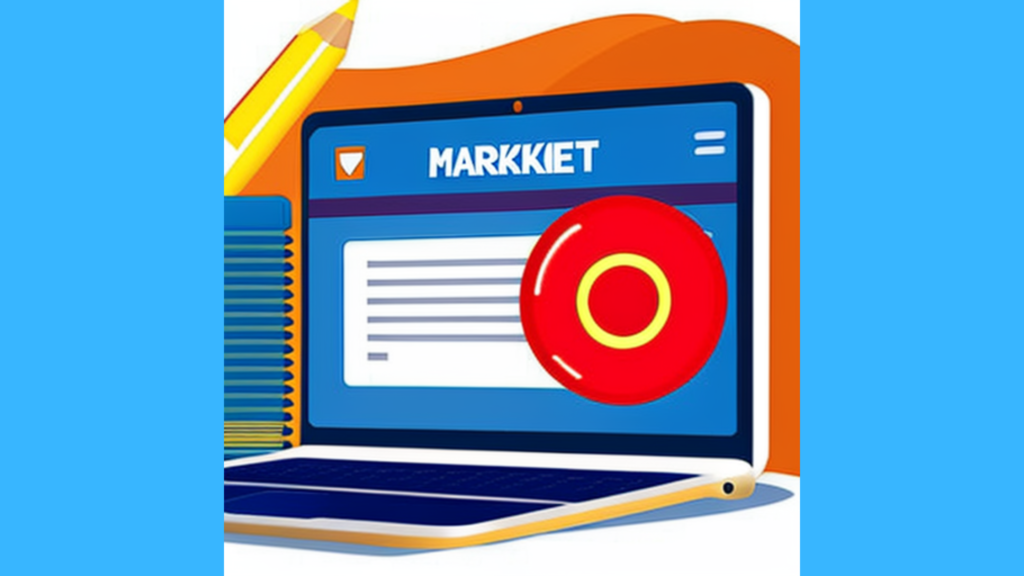Affiliate marketing techniques and tricks
Affiliate marketing is one of the most popular and profitable ways to make money online. It involves promoting other people’s products and earning a commission for each sale or action that results from your promotion efforts. If you’re new to affiliate marketing, don’t worry – this guide will take you through the steps you need to get started.
Understanding Affiliate Marketing
Affiliate marketing is a performance-based marketing strategy that involves three parties:
- merchant
- affiliate (you)
- customer
The merchant is the owner or advertiser of the product or service being promoted, the affiliate is the person or publisher promoting the product , and the customer is the one buying the product or is the consumer of the product. The affiliate earns a commission for each sale or action that results from their promotion efforts.

There are different types of affiliate programs, including:
- pay-per-sale(PPS)
- pay-per-click(PPC)
- pay-per-lead(PPL)
- pay-per-mille(PPM)
In pay-per-sale, the affiliate earns a commission for each sale they refer. In pay-per-click, the affiliate earns a commission for each click on their affiliate link. In pay-per-lead, the affiliate earns a commission for each lead they refer, such as an email sign-up (form submit), zip submit or a free trial.
Pay-per-sale(PPS)
In affiliate marketing, pay per sale (PPS) is a commission model where the affiliate earns a percentage or fixed amount for every sale that is made through their unique affiliate link.
For example, let’s say a merchant sells fitness equipment and offers a 5% commission on each sale made through an affiliate’s link. An affiliate promoting the merchant’s products could create content, such as a blog post or social media post, and include their affiliate link to the merchant’s website.
If a reader clicks on the affiliate link and makes a purchase of $500, the affiliate would earn a commission of $25 (5% of the sale price). If the affiliate generates 8 sales in a month, their commission for that month would be $200.
The commission rate for pay per sale can vary depending on the agreement between the affiliate and the merchant. In some cases, the commission may be a fixed amount per sale, while in others, it may be a percentage of the sale or a combination of both.There are two scenarios of commissions, one-off payment or recurring commissions.
Pay-per-click(PPC)
In affiliate marketing, pay per click (PPC) can refer to a commission model where the affiliate earns money for each click that their referral generates on the merchant’s website.
For example, let’s say an affiliate promotes a merchant’s product on their website using a unique affiliate link. When a visitor clicks on the link and is redirected to the merchant’s website, the affiliate earns a commission for that click, regardless of whether the visitor makes a purchase or not.
The commission rate for each click can vary depending on the agreement between the affiliate and the merchant. In some cases, the commission may be a fixed amount per click, while in others, it may be a percentage of the sale or a combination of both.
For instance, if an affiliate’s agreement with a merchant is to receive $0.30 for each click on their affiliate link, and the link generates 100 clicks in a day, the affiliate earns $30 for that day. However, if the commission rate is 15% of the sale and the product being promoted has a sale price of $100, the affiliate would earn $15 for each sale made through their affiliate link.
Pay-per-lead(PPL)
In affiliate marketing, pay per lead (PPL) is a commission model where the affiliate earns a commission for each lead or potential customer they refer to the merchant’s website.
For example, let’s say a merchant is offering a free trial of their software and is looking to generate leads for their sales team to follow up with. The merchant may offer affiliates a commission for each lead they refer to the merchant’s website who signs up for the free trial.
If an affiliate promotes the merchant’s software using their unique affiliate link and a reader clicks on the link and signs up for the free trial, the affiliate would earn a commission. The commission rate for pay per lead can vary depending on the agreement between the affiliate and the merchant.
For instance, if a merchant is offering a $10 commission per lead, and an affiliate generates 50 leads in a month, their commission for that month would be $500.
The commission structure for pay per lead can also be based on different types of leads, such as email sign-ups, newsletter subscriptions, or form completions.
Pay-per-mille(PPM)
In affiliate marketing, Pay per Mille (PPM) is a pricing model used by advertisers to compensate affiliate marketers for driving traffic to their website or product page.
Under this model, the affiliate marketer gets paid a commission for every thousand impressions (or views) of the advertisement or promotional content they have displayed on their website or social media page. The commission rate is usually set in advance by the advertiser and can vary based on factors such as the type of product, the target audience, and the level of competition in the market.
For example, if an advertiser pays $4 per mille to an affiliate marketer and their advertisement is displayed 100,000 times on the affiliate’s website, the affiliate would earn $400 in commission.
PPM is a popular pricing model in affiliate marketing because it allows advertisers to pay for only the impressions that their ads receive, rather than for clicks or conversions. This helps them to control costs and to measure the effectiveness of their campaigns more accurately. It also provides a fair compensation model for affiliate marketers, who can earn revenue from their website traffic without having to make actual sales.
Process of Starting Affiliate Marketing
- Choose a niche
- Find products to promote
- Build the platform
- Track and analyse results
- Build relationship with merchants
Step 1. Choosing a Niche

Choosing a niche is an important step in affiliate marketing. A niche is a specific topic or area of interest that you will be promoting products in. It’s important to choose a niche that you are passionate about and that has a potential audience. Choosing something you love will prevent you from burnouts and low morale in due time of promoting the product.
To choose a profitable niche, consider the following factors:
- The size of the potential audience
- The level of competition in the niche
- The demand for products in the niche
- The potential commission rates for products in the niche
Examples of profitable niches include health and wellness, personal finance, relationships and technology.
Step 2. Finding affiliate Products to Promote
Once you have chosen a niche, you need to find affiliate products to promote. There are several places to find affiliate products, including:
- Affiliate networks, such as Impact Radius, JVzoo, CJ, Worrior Plus, Market Health, Digistore24, Amazon Associates, Clickbank, and ShareASale
- Individual affiliate programs offered by merchants such as GetResponse, Bluehost, ActiveCampaign, Aweber, Sendinblue
- Product review websites in your niche

When choosing affiliate products to promote, consider the following factors:
- The relevance of the product to your niche and audience
- The quality of the product
- The commission rate offered
- The merchant’s reputation
Step 3. Building a platform
To promote affiliate products, you need to have a platform, such as a blog, website, or social media account. Your platform should be focused on your niche and provide value to your audience.
To build a platform, consider the following steps:
- Choose a domain name and hosting provider
- Install a content management system, such as WordPress
- Choose a theme and customize it to fit your brand
- Create high-quality content that provides value to your audience
Choose a domain name and hosting provider:
Find below some information about the domain name registrars and hosting providers:
- Namecheap: Namecheap is a popular domain name registrar that offers affordable domain name registration, hosting, SSL certificates, and other online services. They have a user-friendly interface and offer 24/7 customer support.
- Bluehost: Bluehost is a popular web hosting provider that offers shared hosting, VPS hosting, dedicated hosting, and WordPress hosting. They offer a wide range of features, including a free domain name, 24/7 customer support, and a user-friendly interface.
- DigitalOcean: DigitalOcean is a cloud infrastructure provider that offers virtual private servers (VPS), managed databases, and other infrastructure tools for developers and businesses. Their services are designed to provide a simple and affordable way for developers to deploy and scale applications in the cloud. DigitalOcean’s main advantage is its simplicity and ease of use, which is aided by its web-based control panel, straightforward pricing, and active developer community.
- Vultr: Vultr is a cloud hosting provider that offers virtual private servers (VPS), bare metal servers, and block storage. They have data centers in different locations around the world and offer a range of features, including a user-friendly interface, 24/7 customer support, and flexible pricing options.
- InterServer: InterServer is a web hosting provider that offers shared hosting, VPS hosting, dedicated servers, and cloud hosting services. They are known for their affordable pricing, reliable services, and price lock guarantee. InterServer’s hosting plans come with unlimited storage and bandwidth, a free SSL certificate, and a choice of Linux or Windows operating systems. They also offer managed hosting services for an additional fee. Overall, InterServer is a great choice for individuals and businesses looking for reliable and affordable web hosting services.
Ultimately, you should research and compare different domain name registrars and hosting providers to find one that meets your specific needs and budget.
Install a content management system(CMS) – WordPress:
To install WordPress on a server, you can follow these general steps:
- Choose a web hosting provider that supports WordPress and meets the requirements of the WordPress installation.
- Log in to your web hosting account and navigate to the cPanel or other control panel provided by your hosting provider.
- Look for the “Softaculous” or “Installatron” option in your cPanel, which is a software installation tool that can automatically install WordPress for you.
- Click on the “Install” button next to WordPress, and follow the prompts to set up your WordPress site, including selecting a domain name, setting up an administrator account, and configuring basic settings.
- Alternatively, you can manually install WordPress by downloading the latest version of WordPress from the official website, uploading it to your web hosting account, and following the prompts to set up your WordPress site.
- After the installation is complete, you can log in to your WordPress dashboard and start customizing your site, adding content, and installing plugins and themes.
It’s important to ensure that you keep your WordPress installation and plugins up-to-date to ensure security and functionality. You can also customize your WordPress site with a wide range of plugins and themes, or hire a developer to create a custom WordPress site for you.
Choose a theme and customize it to fit your brand:
General guidance on how to choose and customize a theme for WordPress:
- Choose a theme that fits your brand: The Envato Market for WordPress offers a wide range of themes to choose from. Look for a theme that matches your brand, including your logo, color scheme, and overall style.
- Install the theme: After you have purchased the theme, you can download and install it on your WordPress site. You can do this by going to Appearance > Themes > Add New, then uploading the theme file you downloaded.
- Customize the theme: Once you have installed the theme, you can customize it to fit your brand. This includes changing the colors, fonts, layout, and other design elements. You can do this by going to Appearance then to Customize, where you can access the theme customization options.
- Add your content: After you have customized the theme, you can add your content, including text, images, videos, and other media. You can do this by creating new pages and posts, or by editing existing ones.
- Test your site: Before launching your site, it’s important to test it on different devices and browsers to ensure that it looks and functions correctly.
- Launch your site: After testing, you can launch your site and start promoting it to your audience.
Remember that customizing a theme can take some time and may require some technical knowledge. If you need help, you can hire a website designer and developer or designer to assist you with the customization process.
Step 4. Create high-quality content that provides value to your audience
Quality content is essential for successful affiliate marketing. Your content should be focused on your niche and provide value to your audience.
Here are some general steps you can follow:
- Identify your audience: Before creating content, it’s important to identify your audience and understand their needs, interests, and pain points. This will help you create content that is relevant and valuable to them.
- Brainstorm content ideas: Use an AI tool such as Ryter or Writesonic to generate content ideas based on your topic or keywords. These tools can provide you with a list of potential headlines, subheadings, and content prompts that you can use as inspiration. If your CMS is WordPress use AI assistant plugin to generate SEO optimized content.
- Research your topic: Use an AI tool such as ChatGPT or Invedio to conduct research on your topic and gather information and insights. These tools can provide you with relevant articles, statistics, and other data that you can use to support your content.
- Plan your content: Once you have your ideas and research, create an outline for your content. This will help you organize your ideas and ensure that your content is structured in a logical and coherent way.
- Write your content: Use an AI tool such as Writesonic to write your content. These tools can help you generate high-quality, natural-sounding content by providing suggestions for sentences, paragraphs, and entire sections.
- Edit and revise your content: Once you have written your content, use an AI tool such as Writesonic or Ryter to edit and revise your content. These tools can provide you with suggestions for improving your grammar, style, tone, and readability.
- Optimize your content: Finally, use an AI tool such as Invedio to optimize your content for search engines and social media. These tools can help you identify keywords, meta descriptions, and other elements that can help improve your content’s visibility and engagement.
Remember that while AI tools can be helpful for creating content, they are not a substitute for human creativity and expertise. Be sure to review and edit your content carefully to ensure that it meets standards and provides value to your audience.
Content that work well for affiliate marketing :
- Writing product reviews
- Comparison articles
- Creating tutorials
- How-to guides
- Sharing and posting on social media
- Using email marketing to promote products
- Listicles
Creating content requires certain considerations to make it effective. Firstly, it is important to be honest and transparent in any product recommendations. Secondly, persuasive language and call-to-actions should be used to encourage engagement from the audience. Additionally, incorporating visual elements such as images and videos can enhance the appeal of the content. Optimizing content for search engines helps increase its visibility and reach. Furthermore, promotion efforts must be strategic and not overly promotional or spammy. Lastly, affiliate links should be used in moderation, and not excessively spammed to the audience. Overall, creating effective content involves careful planning and execution to ensure it engages with the audience and meets its desired objectives.
Step 5. Tracking and Analyzing affiliate Results
Tracking and analyzing your affiliate marketing results is important to optimize your efforts and improve your earnings. There are several tools you can use to track your results, such as Voluum Google Analytics, affiliate network dashboards, and other link tracking tools .
When analyzing your results, consider the following metrics:
- Click-through rate (CTR)
- Conversion rate
- Average order value (AOV)
- Earnings per click (EPC)
Use data to optimize your promotion efforts and improve your earnings.
How to use Voluum to manage your links as an affiliate marketer:
- Set up tracking links: Voluum allows you to create tracking links that can be used to track clicks, conversions, and other metrics. Set up tracking links for each of your campaigns to start tracking your results.
- Monitor your data: Use Voluum dashboard to monitor your data and track your results. You can view data such as clicks, conversions, revenue, and other metrics to see how your campaigns are performing.
- Analyze your data: Once you have collected enough data, analyze your results. Look for trends, patterns, and other insights that can help you optimize your campaigns.
- Optimize your campaigns: Use the insights you gain from analyzing your data to optimize your campaigns. This may involve tweaking your targeting, changing your creatives, or adjusting your bids to improve your results.
- A/B testing: Set up A/B tests to compare different versions of your campaigns. This can help you identify which variables are most effective in driving clicks and conversions.
- Attribution modeling: Clickmagic and voluum both offer attribution modeling tools that allow you to see which touchpoints in the customer journey are most influential in driving conversions. This can help you allocate your budget more effectively and optimize your campaigns for maximum ROI.
Remember that tracking and analyzing your results is an ongoing process. Continuously monitor your data, analyze your results, and optimize your campaigns to ensure that you are getting the best possible results from your affiliate marketing efforts.
Step 6. Building relationships with merchants
Building relationships with merchants can help you earn higher commissions, get access to exclusive deals and promotions, and improve your credibility as an affiliate marketer. To build relationships with merchants, consider the following tips:
- Introduce yourself to the merchant and express your interest in promoting their products
- Provide value to the merchant by sharing feedback and suggestions
- Participate in affiliate marketing programs and events
- Be professional and responsive in your communication with the merchant
Step 7. Promote affiliate products
If you don’t have a website, you can still start affiliate marketing by using other platforms to promote affiliate products. Here are some ways to start affiliate marketing without a website:
- Use free blogging platforms
- Use social media
- Use YouTube
- Use email marketing
- Use forums
- Use paid advertising
- Use of overlay links
Free blogging platforms:
You can use free blogging platforms such as WordPress.com, Wix, or Blogger to create a blog or website to promote affiliate products. While free blogging platforms offer limited features, you can upgrade to a paid plan later to access more advanced features.
Social media:
Social media platforms like Facebook, Twitter, and Instagram are great places to promote affiliate products. You can create posts that showcase the products, write product reviews, or share links to your affiliate products. Just make sure to follow the rules of each platform and disclose your affiliate relationships.
YouTube:
You can create YouTube videos that feature the products you want to promote. You can create product reviews, tutorials, or unboxing videos. Include your affiliate links in the video description and encourage viewers to click on them.
Email marketing:
You can use email marketing to promote affiliate products by creating a newsletter or email campaign. Send emails to your subscribers that feature the products you want to promote and include your affiliate links.

Forums:
There are many forums related to different niches where people discuss topics related to the niche. Find forums that are relevant to the products you want to promote and join the conversation. Share your affiliate links when relevant and helpful, but make sure to follow the forum rules.
Paid advertising:
You can use paid advertising such as Google Ads or Facebook Ads to promote affiliate products. Create ads that feature the products you want to promote and include your affiliate links. Make sure to comply with the ad policies of the platform you’re using.
Remember, it’s important to choose products that are relevant to your audience and to disclose your affiliate relationships to comply with regulations and maintain transparency with your audience.
Link overlay tools:
If you have no website, you can still start affiliate marketing using the link overlay tool, Sniply. Here’s how:
- Choose an affiliate program: Find an affiliate program that matches your interests and has products or services that you would like to promote. There are many affiliate networks, such as Amazon Associates, Clickbank, and Commission Junction, where you can find affiliate programs.
- Sign up as an affiliate: Once you have chosen an affiliate program, sign up as an affiliate and create an account.
- Choose products to promote: Browse the products or services available in the affiliate program and choose the ones that you want to promote.
- Generate affiliate links: Using Sniply’s link overlay tool, you can generate affiliate links that you can share on social media platforms, forums, or other websites. The link overlay tool allows you to add a call-to-action (CTA) to the link that directs users to your own landing page or website. This can help you capture leads and build your email list.
- Share your affiliate links: Share your affiliate links on social media platforms, forums, or other websites where your target audience hangs out. Make sure to share your links in a way that provides value to your audience and avoid spamming.
- Track your results: Use an affiliate tracking tool to track clicks and conversions from your affiliate links. This will help you optimize your campaigns and maximize your earnings.
While using social media and Sniply can be a great way to get started with affiliate marketing, having a website can provide many additional benefits, such as the ability to create high-quality content, build your brand, and attract organic traffic. If you are interested in building a website, you can use platforms such as WordPress or Wix to create a website quickly and easily, even if you have no coding experience.
Wrap Up
Affiliate marketing can be a lucrative way to earn passive income online. To get started, choose a profitable niche, find high-quality affiliate products to promote, and build a platform that provides value to your audience. Create quality content, promote affiliate products strategically, and track your results to optimize your efforts. Building relationships with merchants can also help you earn higher commissions and improve your credibility as an affiliate marketer. With these tips, you can start your affiliate marketing journey today.
Remember, making your first affiliate sale requires effort, persistence, and patience. Keep testing and tweaking your strategy until you find what works best for you and your audience.
By following these steps, you can gain valuable insights into the successful affiliate marketing campaigns in your niche and use that information to improve your own affiliate marketing strategies and tactics.



